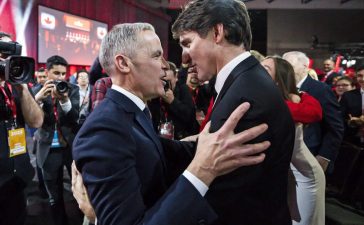Stay informed with free updates
Simply sign up to the US inflation myFT Digest — delivered directly to your inbox.
US inflation fell more than expected to 3.2 per cent in October, the first decline in four months, prompting Treasury yields to fall sharply and Wall Street stocks to climb.
Tuesday’s consumer price data compares with a 3.7 per cent rise in the 12 months to September. The 3.2 per cent year-on-year figure was also marginally below expectations of 3.3 per cent.
The yield on the rate-sensitive two-year Treasury, which moves inversely to prices, was down 0.21 percentage points at 4.83 per cent on Tuesday evening in New York. The yield on the benchmark 10-year Treasury dropped to a three-month low of 4.43 per cent before retracing some of that move to be down 0.18 percentage points at 4.45 per cent.
The S&P 500 rose 1.9 per cent, its biggest one-day jump since April. The Nasdaq Composite climbed 2.4 per cent.
The dollar was 1.5 per cent weaker against a basket of six other major currencies.
“Across the board, it’s a good report,” said Gregory Daco, chief economist at EY Parthenon. “I think this will comfort the excessively data-dependent Fed policymakers that policy is sufficiently restrictive to bring inflation down to 2 per cent.”
The US figures come ahead of an expected fall in UK inflation on Wednesday. Economists polled by LSEG predict price growth of 4.8 per cent for October, sharply below September’s 6.7 per cent.
In the eurozone, inflation fell to 2.9 per cent in the 12 months to October from 4.3 per cent in September, also reflecting this year’s declines in energy prices.
The more benign inflation readings will fuel speculation that central banks including the Federal Reserve, the European Central Bank and the Bank of England have finished raising rates.
The Fed held its benchmark interest rate steady at a 22-year high earlier this month. After Tuesday’s report, futures markets were pricing zero chance that the central bank would lift rates at its next policy meeting in December.
Investors also brought forward their estimates of when the Fed would start cutting rates, with investors pricing in two 0.25 percentage point cuts by July.
The strong market reaction was encouraged by slightly weaker than expected core inflation, which strips out volatile food and energy prices. Core inflation dipped from 4.1 per cent to 4 per cent on a year-on-year basis, and rose 0.2 per cent month on month.
“The Federal Reserve has got to be pretty happy with this and, unsurprisingly, it has reinforced market expectations that the policy rate has peaked,” said James Knightley, chief international economist at ING Economics, of the continued slowdown in underlying inflation.
EY’s Daco said there had been “a few instances” where data had “disappointed to the upside” during this policy cycle. “Investors tend to be prepared for an upside surprise more than a downside surprise,” which he said helped explain why even a modest improvement on forecasts could prompt a sharp swing in markets.
However, Fed chair Jay Powell stressed last week that policymakers would not be “misled by a few good months of data”, and that the central bank could tighten monetary policy further if necessary.
Thomas Barkin, president of the Richmond Fed, echoed that message on Tuesday, warning that inflation might not be on a “smooth glide path down to 2 per cent” despite recent “real progress”.
Nancy Vanden Houten, lead US economist at Oxford Economics, said she did not think the Fed was going to wait until core inflation returned to 2 per cent before starting to lower interest rates, but they would “need to be firmly convinced” it was heading there.
“They’re going to need to see more reports like this . . . [and] some further softness in labour market conditions for the final shoe to drop,” she said.
Some big US companies have reported seeing encouraging signs on price pressures.
“The most important observation we’ve made is that the worst of the inflationary environment is behind us,” Home Depot’s chief financial officer Richard McPhail told analysts after the DIY retailer reported quarterly results on Tuesday.
“Retail prices are settling in the market. Some prices are settling at levels higher than 2022, others are settling lower. But we’re seeing some stabilisation,” McPhail added.
Stronger than expected gross domestic product growth has fanned fears that the slowdown in inflation could stall, but Powell said last week that he and his colleagues expected the pace of economic expansion to slow.
Instead of another interest rate rise, the Fed is increasingly expected to push back the timing of rate cuts deeper into 2024 if consumer prices remain stubbornly high.
US President Joe Biden highlighted in a statement on Tuesday that inflation had fallen without a substantive rise in the unemployment rate, which remained below 4 per cent.
“I’m working to get results for the American people and it’s happening — and I’m not going to let up for one second,” he said.
Additional reporting by Anna Mutoh in New York
This article has been updated to correct the number of months since inflation last fell









